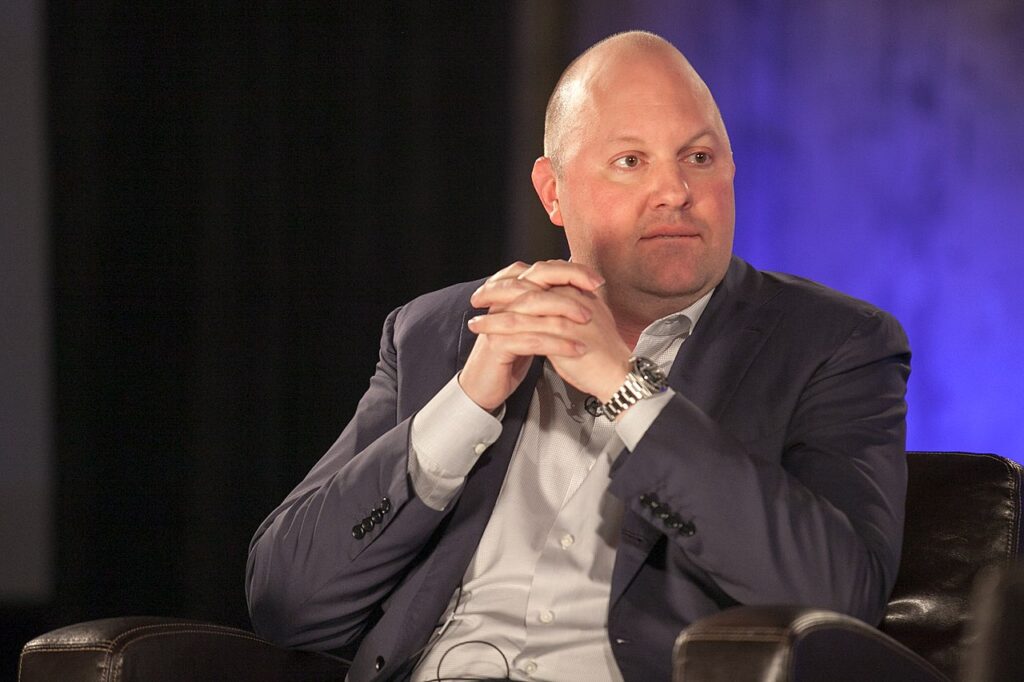Business
Bigger Than AI: Oxbridge Re, Goldman Sachs, a16z Leading Massive RWA Tokenization Charge
Ask a regular investor what’s the big investment theme for 2024, and you’ll probably hear about AI. Ask a smart money investor (VC, hedge fund manager, investment banker), and you’ll hear about something else — Real World Asset tokenization (RWA tokenization for short). Already, this investment theme has swept up everyone from a16z and BlackRock to Goldman Sachs and Oxbridge Re.

Let me ask you a question.
What do names like OpenAI, Anthropic, and Stable Diffusion have in common with names like Oxbridge Re [NASDAQ: OXBR], SurancePlus, and Zoniqx?
The answer, if what we’ve seen so far in 2024 is any indication, is simple. Each started out in relative obscurity before skyrocketing, seemingly overnight, to become a household name in the hottest investment theme of an era.
The only difference is the stage we’re at in each era.
To illustrate what I mean, go and ask the average person “What’s the biggest investment theme for 2024?”.
9/10 times, you’ll probably hear the same two syllables in response: “AI.”
Now go and ask the same question to a bunch of “smart money” people. You know the types — VCs, investment bankers, hedge fund managers.
Chances are, you’re going to get a slightly longer response: “tokenization of real-world assets.” Or RWA tokenization for short.
And if you think I’m making this up, just take a quick look at what’s been happening in just the last week or so (I’ll put all these headlines into context soon):
- Oxbridge announces Strategic Partnership with Zoniqx a pioneer in digital asset management & a successful capital raise for Epsilon Cat Re
- Goldman Sachs to launch three tokenization projects by end of year
- BlackRock’s Tokenized Fund Surpasses $500 Million Milestone
- Andreessen Horowitz (a16z) is betting the house on crypto
And if you dig a little more and look at the last few months of news, you’ll find this is a fast-growing narrative that’s only going to get bigger.
How big?
Well, BlackRock alone’s so bullish on RWA tokenization that it’s counting on tokenizing $10+ trillion worth of RWAs. And yes, that’s trillion, spelled with a “T”.
And everyone else is on this rapid growth trajectory, too.
That Oxbridge headline (which just dropped yesterday) — that’s the “time to scale up big time” signal in an investment story that’s already netted early investors 49% returns in just one year. But more on this later.
For now, there’s one thing that should be abundantly clear — if trillions of dollars are flowing into something most people have never heard of yet, there’s a lot of money to be made.
Crypto 2.0 — RWA Tokenization Is the Next AI
Let’s go back for a second. Back to that headline about a16z “betting the house on crypto”.
Now, at first, this might seem like a strange thing to do in 2024. After all, the crypto bubble has already come and gone.
But that was Crypto 1.0.
What’s coming next, is something else entirely.
To show what I mean, take a scroll through the article and look at the types of startups a16z is betting the house on. Here’s a sample:
- AminoChain: “Gives patients a way to collect royalties on biopsy samples supplied for medical research.”
- Roux: “Turns recipes into collectible NFTs to help chefs and food bloggers monetize their creations.”
- Valyu Network: “Turns data intended for use in training AI models into tokens, creating a system for licensing and tracing the provenance of information.”
If you look a little closer, you’ll soon realize that there’s a common theme joining each of these investments.
And no, that theme is not crypto. Or, at least, it’s not crypto as you probably know it — a speculative bubble of nebulous digital assets.
Instead, the actual theme linking these investments together is the presence of real, tangible assets — recipes, biopsy samples, and data. Real-world stuff that’s been bought and sold for real-world money in the real world since, like, forever.
In other words, each investment is linked by that investment theme we heard about before — RWA tokenization.

And a16z’s not the only one here. Nor is it the first.
Big a little deeper, and we soon see other names cropping up like Tribe Capital, Exor, Stratos, Framework, Morgan Creek Digital, UDHC, New Form, Tokentus, and Keyrock have been betting big on RWA tokenization for a while.
To give another example of what they’re betting on, take a story we picked up on not much more than a month ago. That’s the story of Nayms and Re — two startups in the RWA tokenization space specializing in reinsurance contracts. They’re currently valued at $80 million and $100 million, respectively, and they’ve barely even started.
Of course, while a16z might not be the first, there are two things that set it apart.
First, is its sheer size — it’s already dropped $7.5 billion into this investment theme, adding some serious rocket fuel that’s only going to accelerate things even faster.
And second, we have the simple fact that when a16z gets involved in something, there’s a pretty good chance it’s on the money.
If you need proof of this, just look at their past exits: Facebook [NASDAQ: FB], Airbnb [NASDAQ: ABNB], Lyft [NASDAQ: LYFT], Reddit [NYSE: RDDT], GitHub, Instagram, Oculus, Pinterest [NYSE: PINS], Roblox [NYSE: RBLX], Slack, Wise [OTC: WPLCF], Stripe, Skype, Robinhood [NASDAQ: HOOD], and, of course, Coinbase [NASDAQ: COIN].
And the list goes on once you add up current investments like Stripe, Anduril, BeReal, and the dozens of crypto-centric companies that you’ve probably already heard of. Names like Dapper Labs, OpenSea, Solana, and Ripple (XRP/XRPL).
Basically, if a16z has money in the game, there’s a pretty good chance that it’s about to become the game.
And right now, that game is Crypto 2.0, or what is more properly known as RWA tokenization.
Institutional Finance Is First in the RWA Tokenization Line
That’s enough about a16z for now. A lot of what they’re betting on right now is what’s to come.
Instead, let’s take a look at what’s happening right now — the massive influx of capital into RWA tokenization in institutional finance.
Already, we’ve seen that Goldman Sachs and BlackRock are going majorly long here. But plenty of other stalwarts are up to some pretty interesting stuff, too.
To give one example from earlier this year, HSBC [NYSE: HSBC] created a tokenized gold fund and opened it up to retail investors.
Or, to give an example that’s already proven itself over a slightly longer timeline, we have yesterday’s news from Oxbridge Re.
Now, to be clear, there are two parts to this news.
First, there’s the partnership with Zoniqx, which itself is partnered with PwC and Ripple (there’s that a16z name again… a16z’s a major investor in Ripple). To quote the PR, this “alliance is intended to increase SurancePlus’ presence as it seeks to transform the reinsurance sector by using blockchain technology to create tokenised reinsurance contracts.”
The second part of the news comes at the end of the headline: “A successful capital raise for Epsilon Cat Re.”
What’s Epsilon Cat Re? And why is this important?
Oxbridge Re Proves Demand for Reinsurance Tokenization, Now to Massively Scale Up
One thing that’s setting Oxbridge Re [NASDAQ: OXBR] apart in this RWA tokenization race is that, unlike all the johnny-come-lately’s we’ve heard about so far (BlackRock, Goldman Sachs, etc.), it’s already proven its product over a longer term. Both in terms of real-world functionality (and returns) and in terms of real-world demand.
Most recently, it did this with “Epsilon Cat Re”, the name of its last series of tokenized reinsurance contracts. That’s the follow-up to its “Delta Cat Re” tokens — an issuance that not only also resulted in a successful raise, but also delivered its first-year investors a 49% return.
Yes, seriously. A 49% return in one year. (If that seems too good to be true, take a look here.)
Naturally, with demand (and returns) now being proven, the next step for Oxbridge Re is to start scaling up its offerings in a big way. And by big, I’m talking about capturing a notable chunk of what’s currently a $444 billion market.
And that’s where Zoniqx comes in.
The role Zoniqx plays here is, essentially, as an infrastructure/technology partner, bringing its state-of-the-art Tokenized Asset Lifecycle Management (TALM) solutions into the mix.
Or, in plain English, it’s a move that will do two things for Oxbridge Re’s tokenized reinsurance offerings.
First, the Zoniqx partnership will allow Oxbridge Re to massively scale up its offering by streamlining the entire lifecycle, from token issuance and distribution to compliance.
Second, and just as importantly, Zoniqx’s TALM fills in some important gaps on the road to fully democratizing access to Oxbridge Re’s tokenized reinsurance contracts. Namely, it’s the platform that will enable things like tradability (i.e., liquidity) and even greater blockchain-based asset fractionalization.
Getting a Jump On RWA Tokenization
As the RWA tokenization theme continues to play out over the next year, there are a few things we’re going to see happening.
The first is we’re going to start seeing a lot more headlines as the trickle of news turns into a torrent. We’ve already seen a massive uptick in the number of stories carrying an RWA tokenization theme since the start of the year. What started as an occasional trickle of a few stories a month is now accelerating to multiple stories a week.
That’s only going to get faster. And, as it does, we’re going to see the next thing play out. That is, as more regular investors catch wind of it, valuations are going to skyrocket. This is going to look a lot like what happened with AI-themed investments. As a reminder, NVIDIA [NASDAQ: NVDA] has pretty much 10x’ed since the AI hype started taking the world by storm in 2022.
Once that happens, all bets are off as to how high this will go.
But, to give some idea of where we think it might go, last month we analyzed Oxbridge Re [NASDAQ: OXBR] and conservatively estimated it’s a serious contender to go full-blown multibagger status.
That estimation was based on our observation of serious public market latency compared with the valuations we’re seeing for VC-backed companies in the RWA tokenization space. Especially companies in the specific space Oxbridge Re’s in (reinsurance contracts), like Nayms and Re (valued at $80 million and $100 million, respectively).
What’s happened since then — Goldman Sachs joining the RWA tokenization game, a16z betting the house on it, and Oxbridge Re teaming up with Zoniqx — has more than confirmed this story has some real legs.
Now we’re thoroughly convinced this story is going to get even bigger than we first thought. And that’s still a conservative estimate. (See here for our original Oxbridge Re analysis.)
__
(Featured image by Shubham Dhage via Unsplash)
DISCLAIMER: This article was written by a third party contributor and does not reflect the opinion of Born2Invest, its management, staff or its associates. Please review our disclaimer for more information.
This article may include forward-looking statements. These forward-looking statements generally are identified by the words “believe,” “project,” “estimate,” “become,” “plan,” “will,” and similar expressions, including with regards to potential earnings in the Empire Flippers affiliate program. These forward-looking statements involve known and unknown risks as well as uncertainties, including those discussed in the following cautionary statements and elsewhere in this article and on this site. Although the Company may believe that its expectations are based on reasonable assumptions, the actual results that the Company may achieve may differ materially from any forward-looking statements, which reflect the opinions of the management of the Company only as of the date hereof. Additionally, please make sure to read these important disclosures.

-

 Markets1 week ago
Markets1 week agoSugar Markets Cautious Amid Surplus Outlook and Steady Demand
-

 Crypto2 days ago
Crypto2 days agoEthereum Momentum Builds as Bitcoin Rallies and Trilemma Claims Emerge
-

 Crowdfunding1 week ago
Crowdfunding1 week agoCrowdfunding Grants Open for Business Projects Until January 2026
-

 Biotech1 day ago
Biotech1 day agoHaptena Therapeutics Launches with €3 Million Funding to Target KRAS-Mutated Tumors























